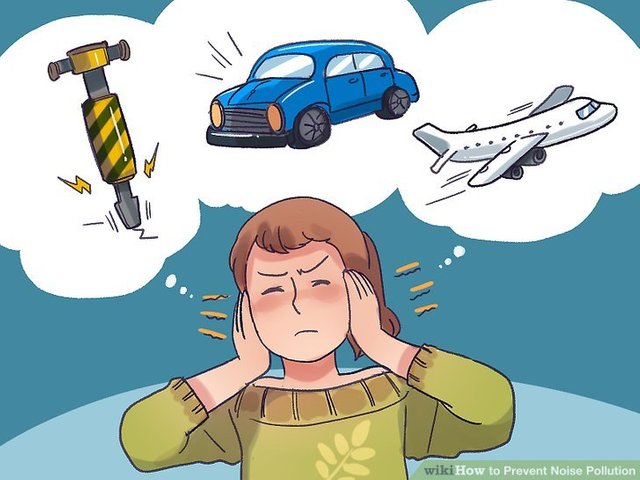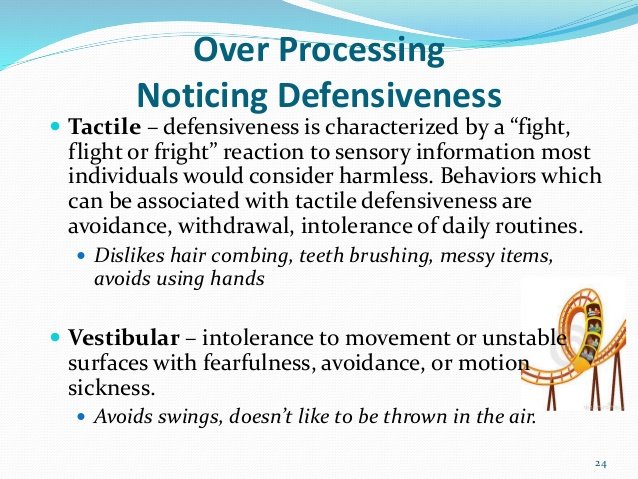Sensory modulation issues can often be misdiagnosed as concentration issues or as ADD or ADHD. Thus in this article I am going to explain briefly what sensory modulation issues are and what you can do to help your child.
Sensory modulation is your brains ability to modulate or regulate incoming stimuli. This includes everything you see, everything you hear, everything you feel on your skin, everything you taste and smell, and the position of your bodyparts and your head with regards to gravity. All this information comes to your brain all the time!!
Your brain needs to:
- Filter out everything that is not important. That means everything that is not relevant e.g. the feeling of your clothes on your skin, the noise of traffic or the picture against your office wall. Filtering it out means you will not be thinking about it (you are still registering it)
- Focus on that one or two things that is relevant (e.g. the conversation you are having or doing the task your teacher gave you)
- Respond when danger or urgent situations arises (e.g. jump away when the window where you standing shatters or close your ears if there is an extremely loud sound, so that your ear drum don’t get damaged.). A fight/flight/freeze reaction will likely be the result. You will excrete Adrenalin with all the related physiological reactions.
If your brain struggles with this process you will either “over respond” or “under respond” to stimuli from the environment.
Over respond means struggling to filter out noise or sensory input to your skin or eyes or to experience this input as more harmful/dangerous/traumatic than it actually is. These kids will complain about noise, block their ears or struggle to focus on their work in a noisy environment. If it is their skin that is oversensitive they will say clothes or shoes are scratchy or hurting them. They will avoid wearing shoes or avoid walking on grass or other surfaces. Children that “over responds” will likely be stressed or overloaded. This might cause irritation, frustration or other negative feelings or behavior.


A child that over respond's body is often in survival mode. This will affect concentration negatively because the body is geared to survival and not to being calm and alert (which is how you need to feel to be able to concentrate optimally.
Under respond means to not register something as important, filtering it out when it needs attention. These kids will not register when you call them the first time. Or they will daydream or work slowly. They often need more sensory input to get going. Thus their concentration will also be affected negatively.
Thus children with sensory modulation issues can often be misdiagnosed as having ADD, ADHD or a general concentration deficit. Sensory modulation has a good prognosis and with intervention this can be managed relatively quickly.
Another aspect to note is that children with ADHD often also have sensory modulation issues. Thus it is important to also address this part of their condition. This will decrease their anxiety and help them to cope better with the demands of the class and life in general.
TREATING SENSORY MODULATION
Activities against resistance have a calming and organizing effect on the body and the brain. Thus it will help children that “over respond” and children that “under respond”.
Any activity against resistance provides this input (proprioceptive input):
- Chewing:
a. Chewing gum
b. Crunchy food like raw carrots, provitas, rice cakes, chips etc.
c. Chewy food
d. Chewing on an object (if a child does this try to replace it with something more socially acceptable like chewing gum. - Sucking and blowing:
a. Sucking Pacifiers
b. Drinking through a straw (especially thick liquids like yogisip)
c. Drinking from a gym bottle
d. Blowing bubbles in water with a straw
e. Mouth soccer, blowing a cotton ball in a tray with a straw - Hugs
- Climbing
- Jumping
- Hanging
- Carrying heavy objects
- Exercise (most exercise provide resistance (kicking a ball, hitting a ball, running etc)
It is important that your child should find this activity enjoyable! Some kids might love hugs, others might avoid it. So give your child the input that you can see thy enjoy and that has that calming and organizing effect on them.
If you need more guidance you can go and see an Occupational Therapist working with sensory modulation.

I visited your page, and found this post amazing! interesting ?,@ronaldmcatee
Downvoting a post can decrease pending rewards and make it less visible. Common reasons:
Submit
Congratulations @therapistgorogue! You have received a personal award!
Click on the badge to view your Board of Honor.
Do not miss the last post from @steemitboard:
SteemitBoard World Cup Contest - The results, the winners and the prizes
Downvoting a post can decrease pending rewards and make it less visible. Common reasons:
Submit
Congratulations @therapistgorogue! You received a personal award!
You can view your badges on your Steem Board and compare to others on the Steem Ranking
Vote for @Steemitboard as a witness to get one more award and increased upvotes!
Downvoting a post can decrease pending rewards and make it less visible. Common reasons:
Submit